According provided by Nikon AF-S lens Nikkor 85mm 1: 1.8G SWM IF SWM many thanks Sergey Svirida и Dmitry Glotte.
In total, Nikon has 6 such lenses:
- Nikon 85mm 1: 1.8 AF NikkorDecember 1987
- Nikon 85mm 1: 1.8D AF NikkorMarch 1994, Japan or Thailand
- Nikon 85mm 1: 1.8G AF-S IF SWM NikkorJanuary 2012
- Nikon 85mm 1: 1.4D AF NikkorNovember 1995
- Nikon 85mm 1: 1.4GN AF-S Nikkor SWM IF Nano Crystal CoatAugust 2010
- Nikon 85mm 1: 1.8 S Nikkor Z, July 2019, for mirrorless cameras
It is believed that the lenses of this series are well suited for some types of portrait shooting - they have rather weak distortion, and a similar combination of focal length and aperture makes it easy to control the depth of field. In 2012, the Nikon 85mm F / 1.8G replaced the very popular Nikon 85mm F / 1.8D.
There is another 85-aperture light from a third-party manufacturer - Sigma EX 85mm 1: 1.4 DG HSM.
Main technical characteristics of Nikon AF-S Nikkor 85mm 1: 1.8G IF SWM:
| Review Instance Name | Nikon AF-S Nikkor 85mm 1: 1.8G IF SWM 265565 (inscription near the front lens - Nikon AF-S Nikkor 85mm 1.8G) |
| Basic properties |
|
| Front Filter Diameter | 67 mm, plastic thread for filters |
| Focal length | 85 mm, EGF for Nikon DX cameras is 127.5 mm |
| Zoom ratio | 1 X (this is a fixed lens without the ability to change the focal length) |
| Designed by | for digital cameras Nikon FX |
| Number of aperture blades | 7 rounded petals |
| Tags | focusing distance in meters and feet, depth of field scale for F / 16, bayonet mount mark, hood mount mark |
| Diaphragm | from f / 1.8 to f / 16. The lens does not have an aperture ring (G - lens type) |
| MDF (minimum focusing distance) | 0.8 m, maximum magnification ratio 1: 8.1 |
| The weight | 350 g |
| Optical design | 9 elements in 9 groups. The lens does not use special optical elements. 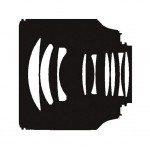 |
| Lens hood | HB-62 |
| Period | from January 2012 to our time |
| Manufacturer country | Made in China |
| Instructions | See |
| Price |
Nikon AF-S Nikkor 85mm 1.8G IF SWM was introduced in early 2012 and became a replacement for the popular Nikon 85mm 1: 1.8D AF Nikkor. I was immediately surprised by the size of the Nikon 85mm F / 1.8G, compared to 85mm f / 1.8D the new lens is noticeably 'thicker' and only slightly lighter.
The figure below shows all three generations of Nikon Nikkor 85 / 1.8 class autofocus lenses:
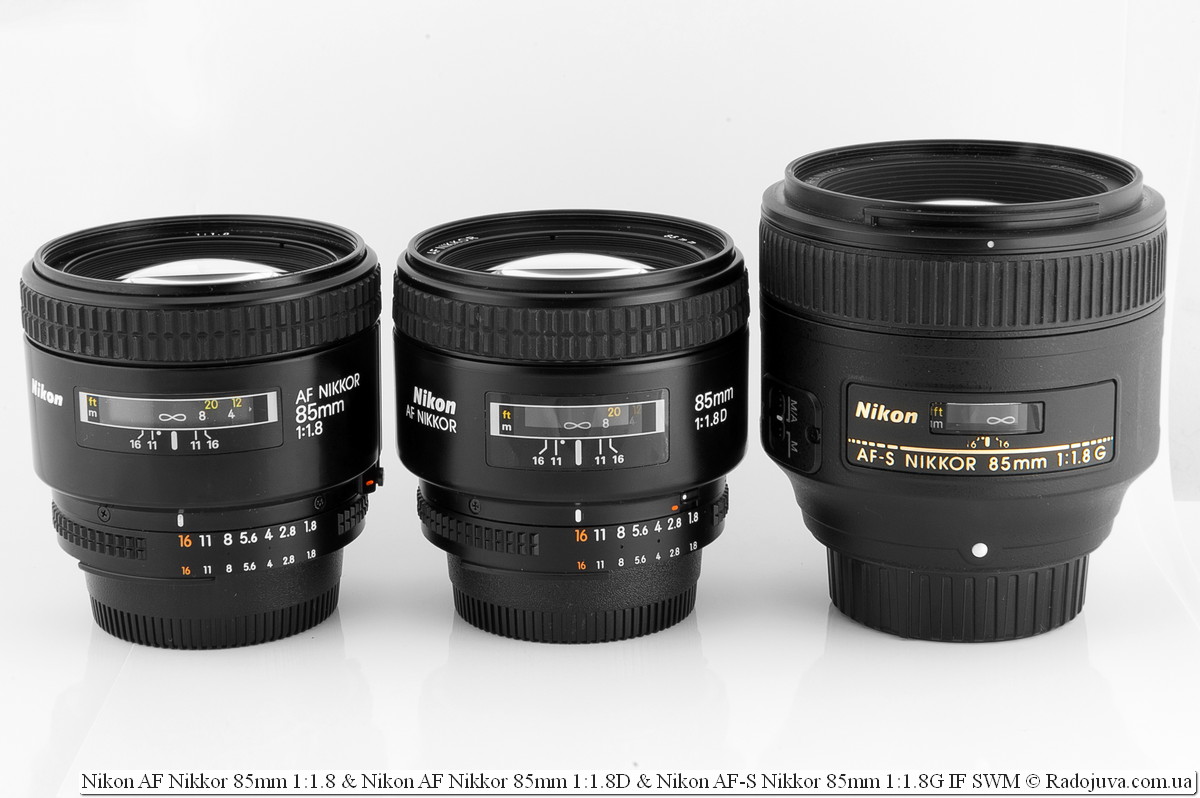
Nikon AF Nikkor 85mm 1: 1.8 и Nikon AF Nikkor 85mm 1: 1.8D and Nikon AF-S Nikkor 85mm 1: 1.8G IF SWM
Bad news - the new Nikon 85mm f / 1.8G now focuses slower than its big brother. I just can't understand why it was necessary to upgrade 85mm f / 1.8D to the AF-S SWM version and, at the same time, get a lens that focuses more slowly at the output? The same situation with 85mm F / 1.4GNwhich focuses much slower non-motorized old version 85mm f / 1.4D... What is Nikon doing? It's too bad that new motorized lenses focus more slowly than their predecessors. I also want to note that Nikon 85mm F / 1.8G is very much behind in focusing speed and its analog from Canon - Canon EF 85mm F / 1.8 USM. It turns out that the old Canon EF 85mm F / 1.8 USM wins in focus speed on all 85-current Nikon.
Nikon 85mm F / 1.8G is made only in China. The lens has a plastic case, to the touch is no different from the new Nikon fix lenses: Nikon 50mm F / 1.8G, Nikon DX 35mm F / 1.8G. Unlike 85mm f / 1.8DThe G-version lost the metal thread for the light filter, and the 9-blade aperture, but retained the metal mount and acquired the mode M / AM. Old 85mm f / 1.8D still made better than the new G-version.
This is what the Nikon AF-S Nikkor 85mm 1: 1.8G IF SWM looks like from different angles, on the Nikon AF camera N8008S, with a Nikon HB-62 blend and compared to Nikon ED AF Nikkor 80-200mm 1: 2.8D (MKII):
The Nikon 85mm F / 1.8G comes with an HB-62 bayonet hood that can be mounted backwards and taken with you anywhere. The hood is not screwed into the light filter, but is put on using special slots on the lens. If you put the hood in transport mode, you completely lose access to the focusing ring. Front filter diameter - 67mm. The lens is nice, looks good on the camera.
The good news - Nikon 85mm F / 1.8G has high optical performance. The lens is very sharp, sharper 85mm f / 1.8D, and with very good bokeh.

Differences autofocus 85-current Nikon. Nevertheless, version 85 1,8G received the most points from me.
Focusing
Nikon 85mm f / 1.8G focuses very quietly thanks to 'SWM'to the motor (Silent Wbird Motor - quiet wave / ultrasonic motor) and refers to the lens'AF S'type (with built-in motor focusing), and therefore it will automatically focus on any Nikon digital SLR camera. On cameras Nikon D80, D700, D750 и Fujifilm FinePix S5 Pro I had no complaints about the accuracy and tenacity of auto focus. Only the focusing speed left an unpleasant residue.
During focusing, the front and rear lenses remain stationary, as the lens uses internal focusthat is indicated on the case by the letters'IF'-'Iinternal Focus' - 'Inner Focus'.
On the lens housing you can find focus switch 'M / A - M'. In the 'M / A' position, auto focus works with constant manual focus priority. The 'M / A' mode is very convenient and useful - for manual focusing or focus correction, you do not need to additionally switch the lens to the 'M' mode.
In manual focus mode, the ring rotates 120 degrees, when it reaches the extreme positions it does not rest, but continues to slide, without affecting the focus. Focusing by hand is nice and easy. During auto focus, the focus ring remains stationary.
The minimum focusing distance is 80 cm, while you can get a maximum magnification of 1: 8. The lens has a window with a scale of distances in meters and feet, as well as a depth of field scale for the F / 16 value and a mark for working in the infrared spectrum.
Information on choosing a portrait lens can be found in the 'Portrait Fixed Lenses for FX Cameras', the optical schemes of all 85-ok can be found in the section'Nikon Fix Lens Schemes'. What do the designations in the lens name (AF-S, SWM, IF, G) mean in the article 'Types of Nikon Lenses'. How to achieve maximum blurring of the background with Nikon AF-S Nikkor 85mm 1: 1.8G SWM IF is described in section 'Blurred background'. On Nikon DX cameras EGF lens will fit 127,5mm due to crop factor.
Sample photos on Nikon 85mm F / 1.8G
The lens is sharp. Like many fast lenses, the Nikon 85mm F / 1.8G suffers from chromatic aberration, and the fringing is especially pronounced (the color of the blur zone is purple and green). Distortion is minimal, vignetting on FX cameras disappears at F / 2.8. I was very pleased that the lens practically does not respond to side and backlight, it is very difficult to catch glare. The bokeh of the lens deserves special attention. Many sites write that the Nikon 85mm F / 1.8G produces super-bokeh, yes, the bokeh is really good, but still 85mm F / 1.4GN does not reach.
You can download RAW source files at this link (60 files in .'NEF 'format, 330 MB). All photos were shot using protective filter Hoya HMC 67mm UV (0).
Supplement: You can see more examples of photos on cropped cameras of the Nikon DX series in the reviews Nikon D40x, Nikon D50 и Fujifilm FinePix S5 Pro.
Differences between Nikon AF Nikkor 85mm 1: 1.8D (1.8D) and Nikon AF-S Nikkor 85mm 1: 1.8G IF SWM (1.8G)
- Version 1.8D older than 1.8G. Version 1.8D was introduced in March 1994, and 1.8G in January 2012. Thus, the difference in technology is 18 years.
- Version 1.8D It does not have a built-in focusing motor, and therefore it will be difficult to work with on younger Nikon cameras. In turn, 1.8G is equipped with a SWM motor and will work well on any Nikon digital SLR cameras.
- Because the 1.8D uses a camera motor (a so-called “screwdriver”), the lens makes a lot of noise during focusing. The 1.8G version works almost silently.
- Version 1.8D focuses faster.
- Version 1.8D does not have a focus mode switch. 1.8G has a wonderful switch M / AM.
- During auto focus, the focus ring 1.8D rotates and cannot be touched. During auto focus on 1.8G, the focus ring does not rotate.
- Version 1.8D Uses an internal focusing type Rear Focusing System (RFS), a rear focusing system that moves the rear elements to focus. In turn, the 1.8G uses fully internal focusing, during which neither the front nor the rear elements move.
- Version 1.8G has a longer stroke of the focus ring (120 degrees, versus 90 degrees for 1.8D).
- Version 1.8D has a hard stop for instantly focusing on infinity (hard infinity-focus stop). In the case of 1.8G, accurate aiming at infinity is carried out using automatic focusing (all due to temperature limitations of the material).
- Version 1.8D It has an aperture control ring, which can be very useful for working on some film cameras, as well as while working on cameras of other systems. For example, some photographers buy 1.8D to shoot video using Canon or Sony cameras, where the iris can be controlled using the iris ring. Version 1.8G lacks such a ring, and aperture control is possible only with the help of camera controls.
- Version 1.8D a little harder.
- The 1.8G has a rubber seal near the lens mount to protect the lens and camera from dust and moisture.
- Version 1.8D smaller in size, in particular, it uses filters of a smaller diameter.
- Version 1.8D uses metal thread for light filters, and 1.8G uses plastic thread.
- Version 1.8D It has 9 aperture blades, versus 7 1.8L blades.
- Version 1.8D uses a metal hood that is screwed into the thread of the front filter and cannot be installed in the opposite direction for transportation. Version 1.8G uses a plastic bayonet hood with the ability to install the reverse side.
- У 1.8D the minimum focusing distance is 85 cm, versus 80 cm for the 1.8G (less is better).
- Part of the lenses 1.8D made in Japan, and part in Thailand. All 1.8G lenses are made in China.
- У 1.8D There is a label for working in the infrared spectrum.
- У 1.8D there are two marks of the depth of field scale - for F / 11 and F / 16. The 1.8G has a notch for F / 16 only.
- Touch version 1.8D assembled much more reliable than 1.8G.
- Optically 1.8G is better than 1.8D, First of all, the difference is noticeable during operation on the f / 1.8 aperture.
As you can see, at least 1.8G is 18 years newer than the old man 1.8D, but the latter, in some nuances, is better than the newer model. Overview Nikon AF Nikkor 85mm 1: 1.8D You can view here.
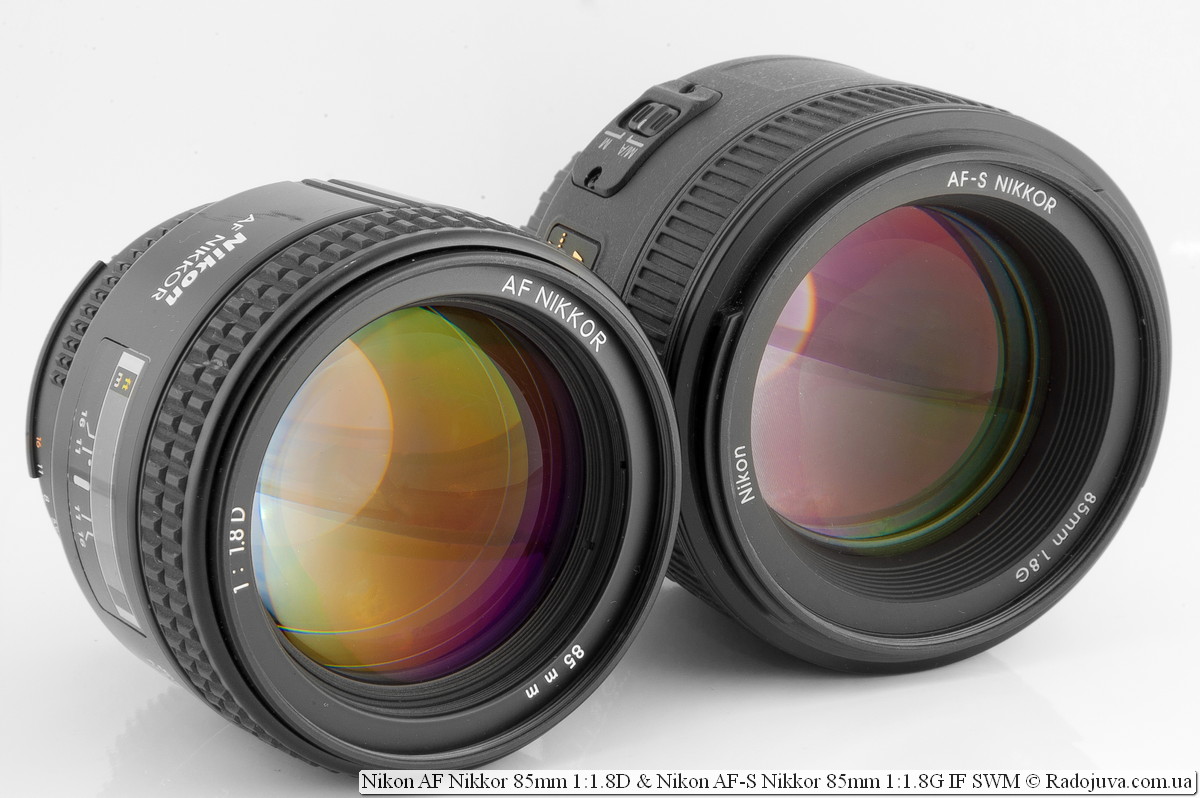
Nikon AF Nikkor 85mm 1: 1.8D and Nikon AF-S Nikkor 85mm 1: 1.8G IF SWM
My use experience
I shot on the Nikon 85mm F / 1.8G at several weddings, the difference between the F / 1.8G version and F / 1.8d quite noticeable, especially in sharpness at f / 1.8. Despite some flaws, the Nikon 85mm F / 1.8G is by far the best price / quality ratio among the rest of the Nikon 85s. because i recommend it as an inexpensive and good fast-fix for shooting portraits both in crop and in full frame. Nikon 85mm F / 1.8G does almost everything the same as Nikon 85mm F / 1.4G, while its price is many times lower :).
Lens prices
Real prices for Nikon AF-S Nikkor 85mm 1: 1.8G IF SWM lens can be viewed here, or in the price block below:
Comments on this post do not require registration. Anyone can leave a comment. Many different photographic equipment can be found on AliExpress.
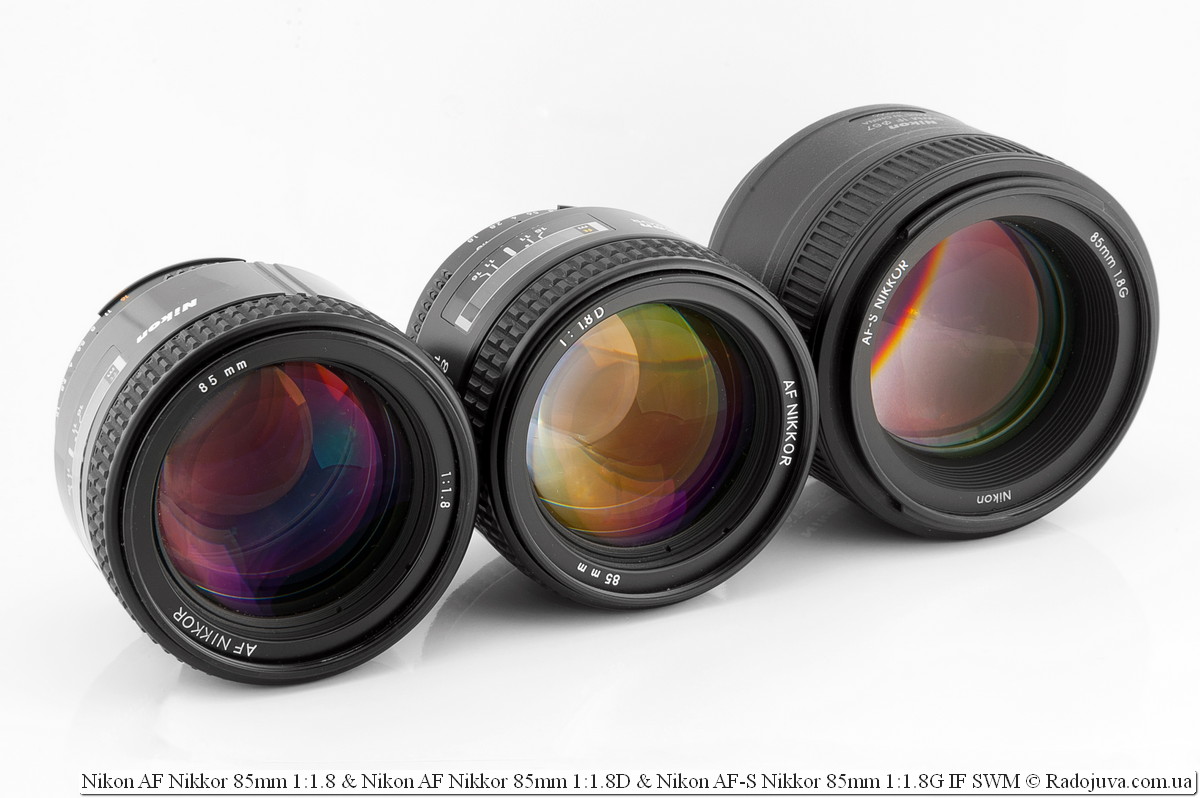
Three generations of Nikkor 85 / 1.8 class lenses: Nikon AF Nikkor 85mm 1: 1.8 и Nikon AF Nikkor 85mm 1: 1.8D and Nikon AF-S Nikkor 85mm 1: 1.8G IF SWM
All autofocus 85s
Choosing a good 85mm portrait lens is very important for a large number of photographers. I pay a lot of attention to this issue, therefore I have prepared this list of all such autofocus lenses for full frame cameras with F <= 2 and a focal length of about 85 mm.
Nikon (F, Z mounts)
- Nikon 85mm 1: 1.8 AF Nikkor [December 1987]
- Nikon 85mm 1: 1.8D AF Nikkor [March 1994, Thailand/Japan]
- Nikon 85mm 1: 1.4D AF Nikkor [November 1995]
- Nikon 85mm 1: 1.4GN AF-S Nikkor SWM IF Nano Crystal Coat [August 2010]
- Nikon 85mm 1: 1.8G AF-S IF SWM Nikkor [January 2012]
- Nikon Nikkor Z 85mm 1: 1.8 S [July 2019]
- Nikon Nikkor Z 85mm 1: 1.2 S [January 2023]
Canon (EF, RF mounts)
- Canon LENS EF 85mm 1:1.2 L USM [September 1989
- Canon LENS EF 85mm 1: 1.8 USM [July 1992]
- Canon LENS EF 85mm 1:1.2 L II USM [March 2006]
- Canon LENS EF 85mm 1:1.4 L IS USM [November 2017]
- Canon lens RF 85mm F1.2L USM [May 2019]
- Canon lens RF 85mm F1.2L USM DS (DEFOCUS SMOOTHING) [October 2019]
Yongnuo/YnLens (different mounts)
- Yongnuo YN85mm F1.8 (YN85mm F1.8) [9/6, Canon EF, February 2017]
- Yongnuo YN85mm F1.8 (YN85mm F1.8N) [9/6, Nikon F, May 2019]
- Ynlens YN85mm F1.8S DF DSM (YN85mm F1.8S) [9/8, Sony E, August 2020]
- Ynlens YN85mm F1.8R DF DSM (YN85mm F1.8R) [9/8, Canon RF, May 2021]
- Ynlens YN85mm 1:1.8Z DF DSM (YN85mm F1.8Z) [9/8, Nikon Z, March 2022]
- Yongnuo 85F1.8S DF DSM [9/8, Sony E, August 2022]
Sony / Sony Zeiss ZA / Minolta (E / FE, A mount)
- Sony FE 1.4/85 GM (SEL85F18GM) [February 2016]
- Sony FE 1.8/85 (SEL85F18) [February 2017]
- Sony SAL85F14Z / Carl Zeiss Planar 1,4 / 85 ZA T* [June 2006]
- Minolta AF 85mm 1:1.4 (22) (AF lens 85) / Minolta Maxxum / Dynax / G / G+D / G+RS / G+D+LE and other versions of the same lens, A mount [1987]
Sigma (different mounts)
- Sigma EX 85mm 1: 1.4 DG HSM (two sub-versions with different body finishes, for Canon EF, Nikon F, Pentax K, Sony A, February 2010)
- Sigma 85mm 1: 1.4 DG | A [Art] (for Canon EF, Nikon F, Sigma SA, Sony E, Leica L, September 2016)
- Sigma 85mm 1: 1.4 DG DN | A [Art] (for Sony E, Leica L, August 2020)
Viltrox (different mounts)
- Viltrox PFU RBMH 85mm F1.8 STM (Sony E/FE + Fujifilm X, 2018)
- Viltrox AF 85/1.8 STM ED IF (Nikon Z, Canon RF, December 2020)
- Viltrox AF 85/1.8 II STM ED IF (Sony E/FE + Fujifilm X, July 2020, light version XNUMX)
Pentax (K mount)
- SMC Pentax-FA* 1:1.4 85mm IF AUTO FOCUS PENTAX 85 [1992]
- HD PENTAX-D FA * 85mm 1: 1.4 ED SDM AW [May 2020]
Samyang / Rokinon (different mounts)
- Samyang AF 85 / 1.4 EF (for Canon EF, scheme 9/7, June 2018)
- Samyang AF 85/1.4F (for Nikon F, scheme 9/7, April 2019)
- Samyang AF 85 / 1.4 FE (for Sony E, scheme 11/8, March 2019)
- Samyang AF 85 / 1.4 RF (for Canon RF, scheme 11/8, May 2020)
- Samyang AF 85 / 1.4 FE II (for Sony E, scheme 11/8, July 2022)
Meike (Canon EF, Nikon F, Sony E, Nikon Z, FujiFilm X)
- MEIKE 85mm AF 1: 1.8 [review] (Canon EF / Canon EF-S, April 2018)
- MEIKE 85mm AF 1: 1.8 [review] (Nikon F, Aug 2020)
- MEIKE 85mm 1:1.8 Auto Focus Lens FF STM [review] (for Sony FE/E + Nikon Z, Canon RF, FujiFilm X, June 2022 + March 2023)
- MEIKE 85mm 1:1.4 Auto Focus Lens FF STM (for Sony FE/E + Nikon Z, September 2023)
Zeiss (various mounts)
- Zeiss Sonnar 1.8 / 85 T * (Batis 1.8 / 85) [April 2015, built-in stabilizer, Sony E/FE mount, 11/8]
- Carl Zeiss Planar 1,4/85 ZA T* (Sony SAL85F14Z) [June 2006, Sony A/Minolta A mount, 8/7]
- Carl Zeiss Planar 1,4 / 85 T * [November 2002, Contax N mount, 10/9]
Tamron (different mounts)
- Tamron SP 85mm F/1.8 Di VC USD Model F016 (for Canon EF, Nikon F, Sony A [without VC function], March 2016)
Tokina (Sony E / FE mount)
- Tokina atx-m 85mm F1.8 FE (for Sony E, most likely a complete analog Viltrox PFU RBMH 85mm F1.8 STM, January 2020)
AstrHori (Sony E/FE mount)
-
AstrHori AF 85mm 1:1.8 [December 2022]
Panasonic (L mount)
- Panasonic LUMIX S 1: 1.8 / 85mm [November 2020]
Separately, you can still highlight non-classic 85s:
- macro lens Canon Lens RF 85mm F2 MACRO IS STM [2020, RF]
- longer LEICA APO-SUMMICRON-SL 1: 2/90 ASPH. (2018, Leica l)
- less aperture Sony 85 / 2.8 SAM (SAL85f28) [2010, A]
- shorter SMC PENTAX FA 1:1.8 77mm Limited (1997, K)
- shorter HD Pentax-FA 1: 1.8 77mm Limited (2021, K)
- shorter Samyang AF 75 / 1.8 FE (2020, E) + Samyang AF 75/1.8X (2023, X)
- cropped Samsung Lens 1:1.4 85mm ED SSA i-Function [2011, NX]
- cropped and longer FUJIFILM FUJINON LENS SUPER EBC XF 90mm 1: 2 R LM WR [2015, X]
- cropped and shorter Viltrox AF 75/1.2 XF STM ED IF [2022, X, E, Z]
- cropped, less aperture, macro lens Nikon DX AF-S Micro Nikkor 85mm 1: 3.5G ED VR SWM IF Micro 1: 1 [2009, F]
- many 90/2.8 class macro lenses
In addition to this review, I recommend a look at the section on portrait lenses for Nikon.
Results
Nikon AF-S Nikkor 85mm 1: 1.8G SWM IF - great lensGood for portraiture. I recommend.
Update: there was a review of an inexpensive alternative to this lens in the face YONGNUO 100 / 2.
Material prepared Arkady Shapoval. Training/Consultations | Youtube | Facebook | Instagram | Twitter | Telegram

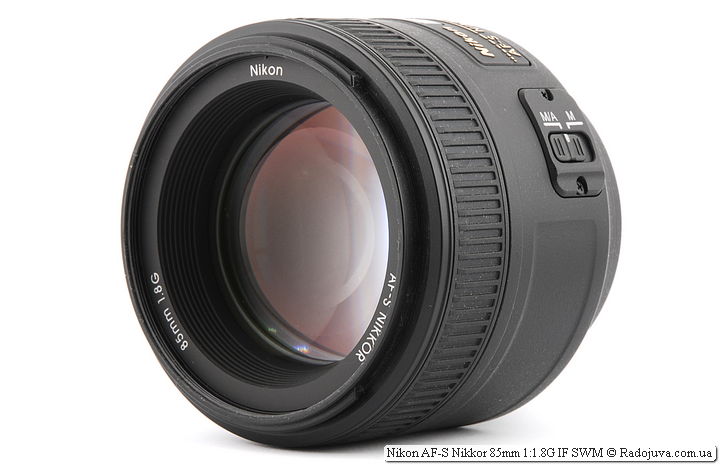
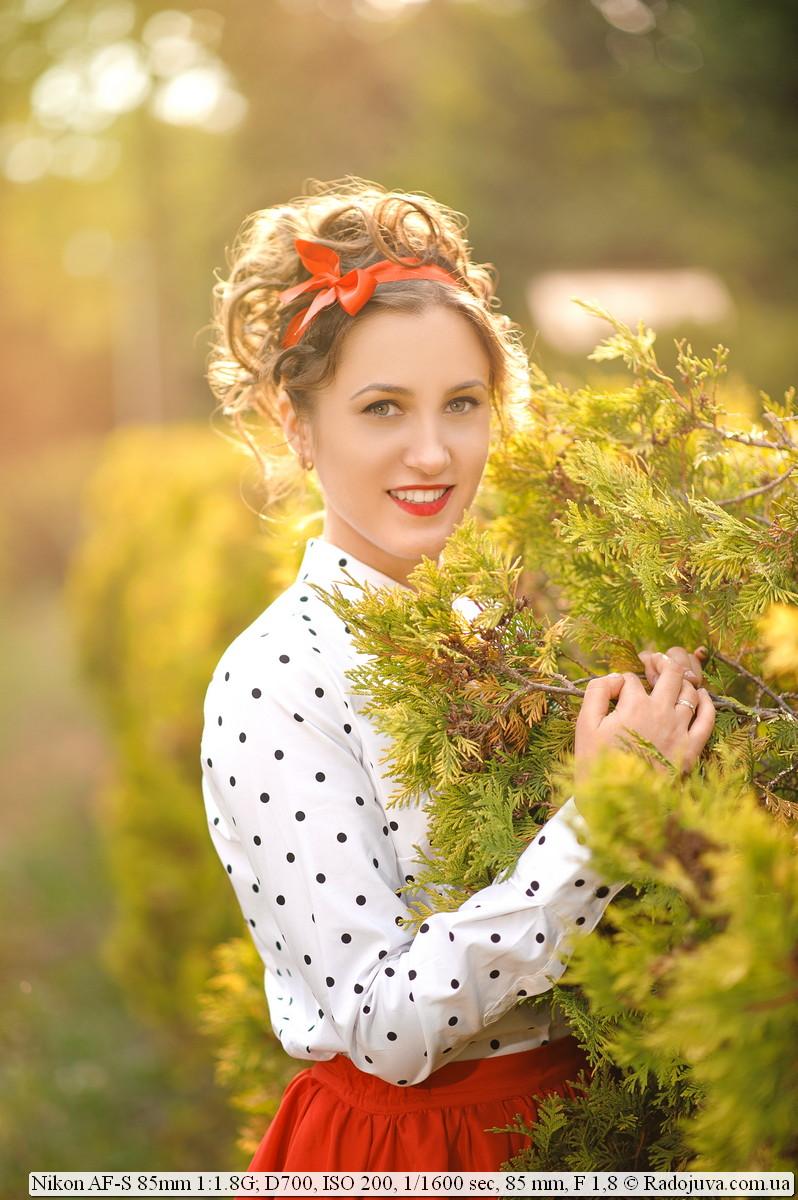
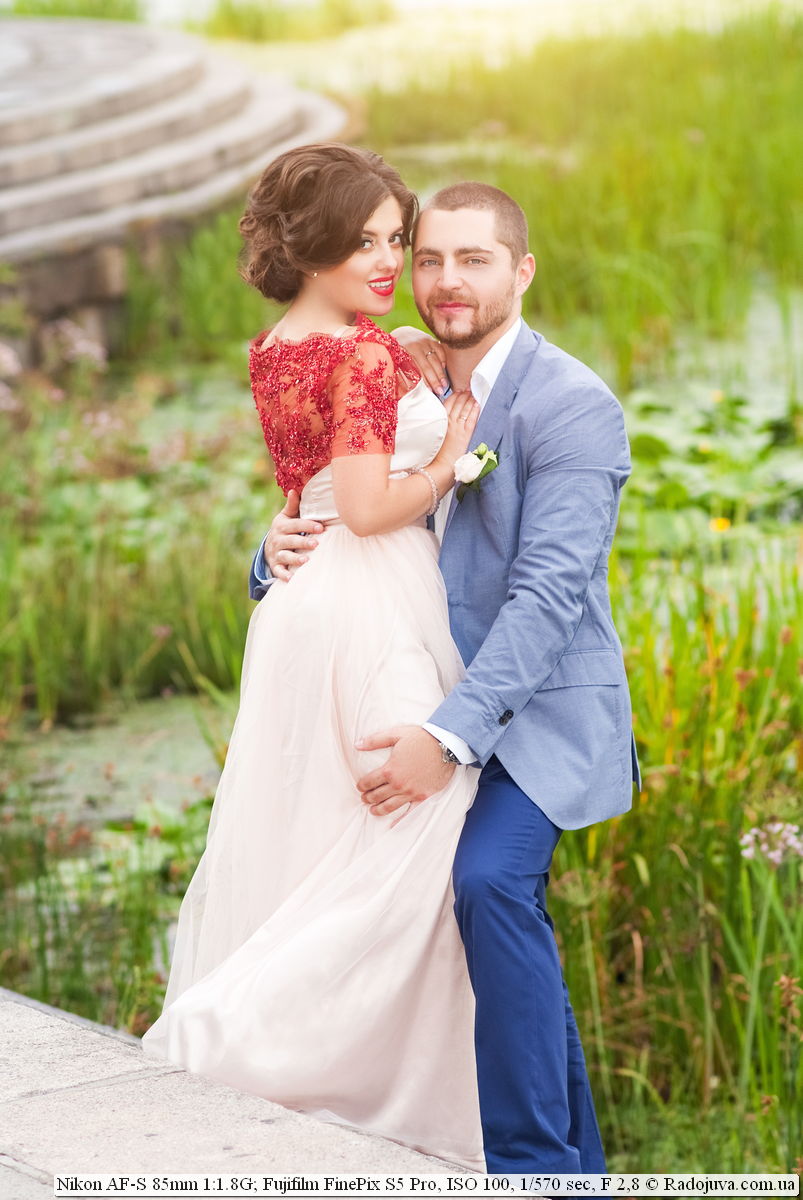










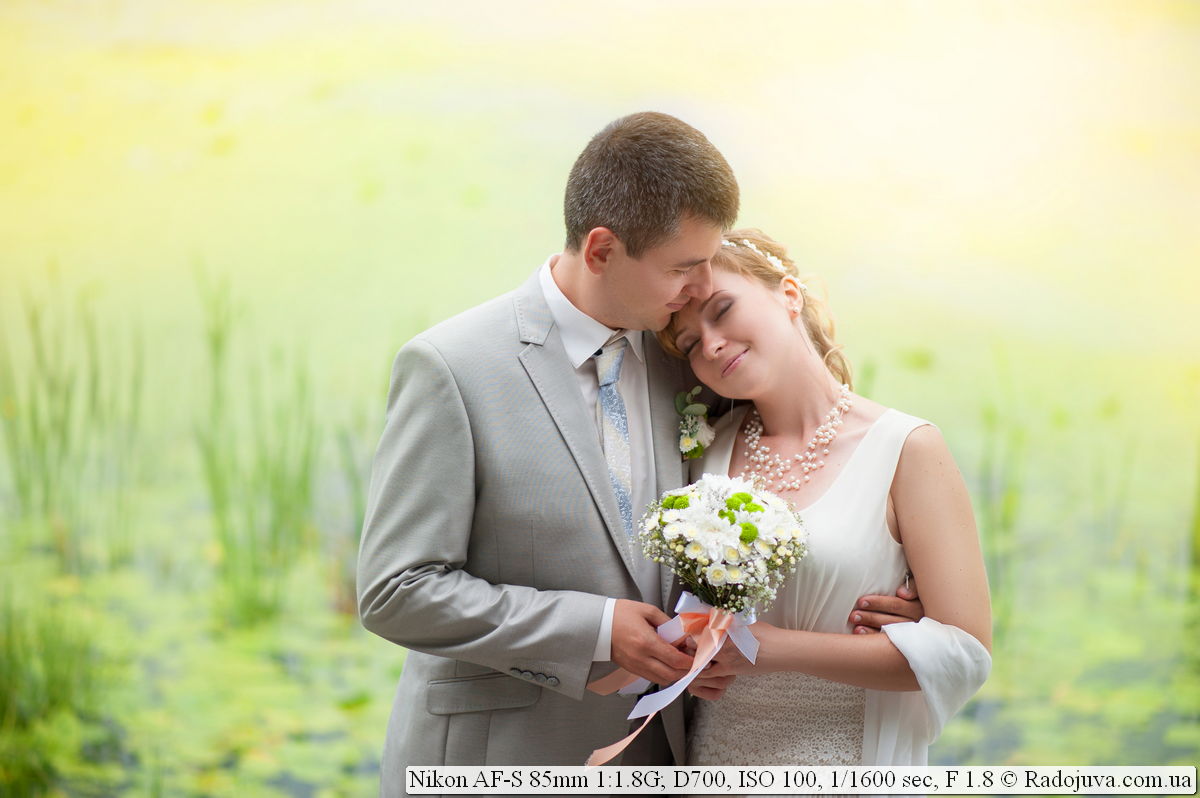
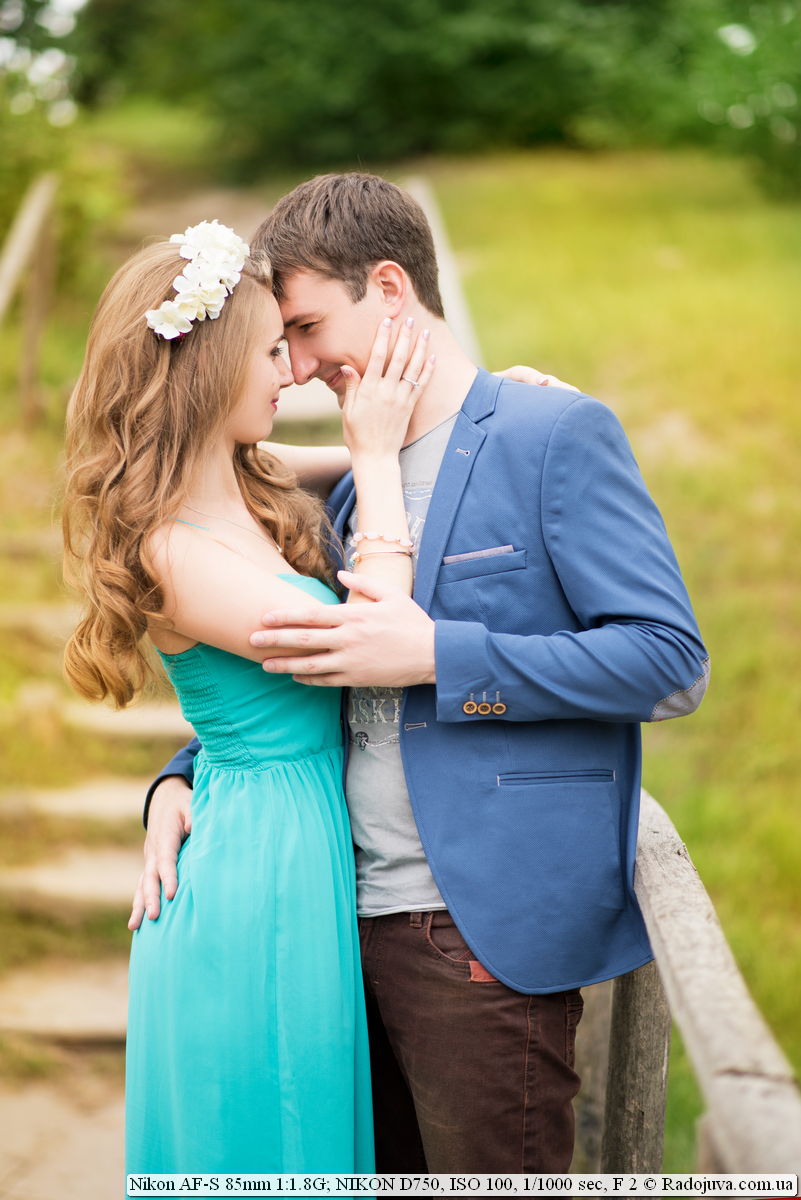




























































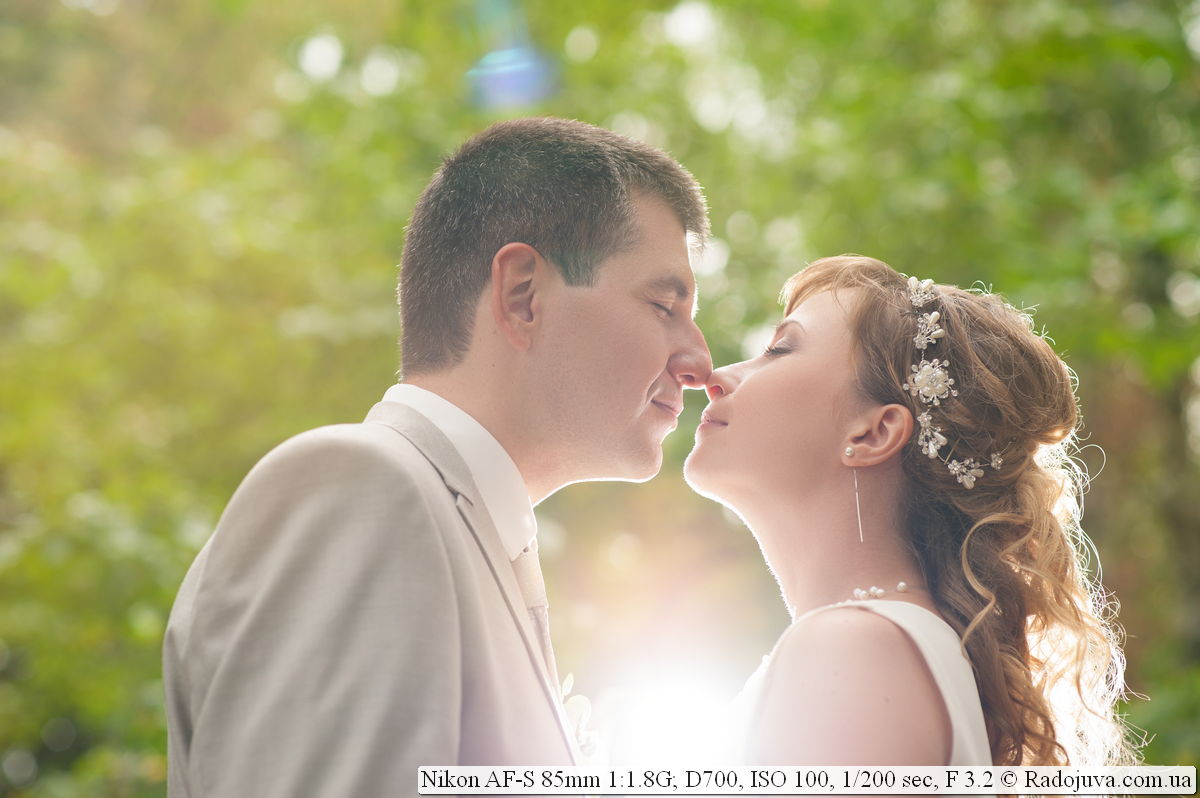
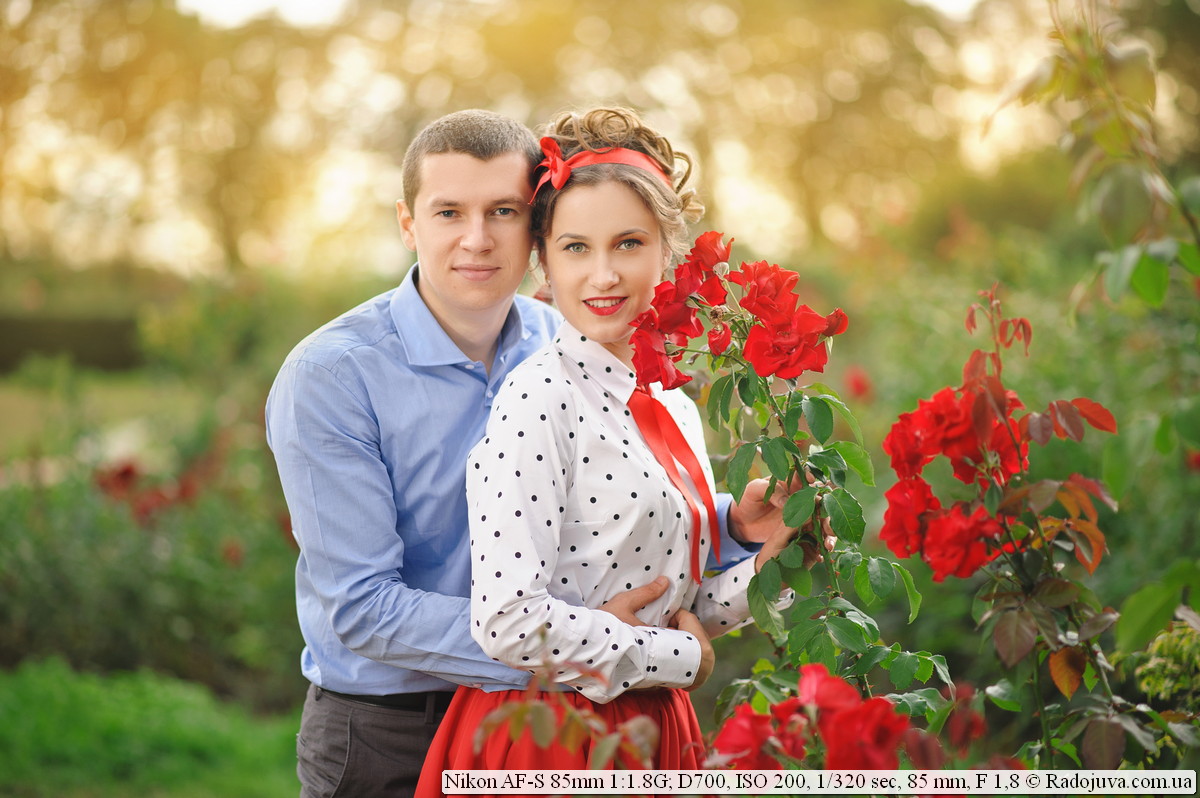

It is in vain that you reject zooms. I use 5100-24 /85-3.5 VR on D4.5. A very good all-rounder, customers are satisfied with the quality, they are excellent friends with the flash. At 24, you can shoot architecture, and at 85, you get good portraits, only there is no special bokeh, such as in the fix 85 / 1.8 G. Someday I will definitely get it. I also have 50 /1.8 G - gives great bokeh and fast focusing and 35 / 1.8 G - also a very good fix, but more for group photos.
I don't like photos with flash at all (unless, in extreme cases, photos are more of a hobby for me), so aperture and bokeh are very important !!! Your zoom is not very good and it seems to be better for a full frame! But thanks anyway!!!
Buy a good flash like nikon sb-700 or sb-910 and you will love flash photography :) Sometimes even the largest aperture ratio is catastrophically small - it's not for nothing that 95% of professionals shoot with artificial light sources.
Hello!
I have as the main lens for reporting Nikon 35mm 1.8g now thinking about buying a Nikon 50mm 1.8g or 85mm 1.8g tell me if I buy another 35mm to my 85mm, will I need a polynyant or will it be unnecessary? Fotkay mainly family photos. Or is it better to be a universal 18-140mm lens? Thank!
I think you will have enough 85 mm 1.8, you’ll have a wide cut, legs and legs, then you will not need 50 mm so much, but I don’t need 50 mm.
Hello Arkady, please tell me which lens is best to buy on Nikon D90 as a portrait portrait Nikkor 85 f1.8g or Tokin 100 f2.8 Nikon 50 f1.8D and 35 f1.8g and kit 18-105 are available.
Of course, I’m not Arkady, but my opinion is 85ka. Tokina Makrik. It will not be as plastic as the 85ka. Well, the aperture: the tokens 2.8 only at infinity. As the subject approaches, the aperture decreases. In short, I am in favor of using each lens as intended
And on d3100 will be?
I will support Eugene. Buy better 85 1.8. He will focus on both the d90 and d3100. And most importantly, his picture will be simply abalone, even after you have 35 1.8 and 50 1.8.
85 / 1.8G will be everything. Tokin will not focus. Only hands.
Tell me, I plan to take either 1.8G or 1.8D, the difference is about 1000 hryvnias, tell me whether it is worth overpaying for the G version? I will use on Nikon D7000
I have a D7000. I used the dashka a little, but I took the G-version for myself. Pleases. I liked the drawing more. And sharper in the open.
Arkady, tell me please, I can’t decide what is the best lens to take for portrait shooting on the street 50mm or 85mm? and write the full name please.
Good review. I like your approach to testing from a practical point of view.
I already ordered such a lens and your review only confirmed the correctness of my choice. Thank you :-)
Tell me, is it suitable for the Nikon D3100?
Yes
there before me someone had already asked, but somehow they did not answer ...
according to the picture, does the 9 petals and the aperture ratio of 1.4 of the 85 1.4D lens have an advantage over the 85 1.8G in terms of the pleasantness of the picture? ...
The pleasantness of the picture is a thing more individual for these glasses, because they are both very good.
Ok !, I agree with every word!
but then I will reformulate ... 1.4D costs about twice as much as 1.8G and hence the question, is 1.4D worth the overpayment? ..
Good day. Please, tell me please, if I buy instead of a portrait portrait 85mm 1,8g macro 105mm 2,8g, will I lose anything in the sense of a lens for portraits?
lose slightly aperture, and angle.
But 105 on the crop, as for me, is more interesting. At FF, perhaps 85.
I chose between them myself, but bought 85ku. 105k is sharper, the aperture at the minimum focusing distance is even less than 2.8. Besides, according to DXOmark tests, the 85ka is better. And it costs less! The only plus in 105ki (except for macro photography) is less chromatite! For portraits, 85ka is better - not so skin imperfections will be visible. DOF less - Eyes in focus, nose tip and ears blurred.
Perhaps you confused the words “on urop” and “on FF”, I have a nikon d7000? if not, why not?
I didn’t mix it up, just like that, just 105 or better 135 on crop is wonderful portraiture, and 85 mm on ff is a great fashion lens for shooting production scenes and in the studio.
Although in both cases there is room for expansion))
On the other hand, if the carcass is the youngest and the smallest, non-motorized, then 85 / 1,8g will be the most convenient to use as a regular portrait, in conjunction with some kind of zoom or 35 / 1,8g, of all Nikon’s motor fixes now
Good day. I bought 85g, though without reading your explanation, I have 7000. Tell me, if I have 18-105 and a flash of 700, do I need a 35g lens?
Slide over camera 18-105 and set to 35mm. Take a few pictures and understand ...
Options are: Nikon 20mm f / 1.8G ED AF-S Nikkor, Nikon 28mm f / 1.8G AF-S Nikkor, Nikon 35mm f / 1.8G AF-S Nikkor (full frame only! Not DX), Nikon 50mm f / 1.8G AF-S Nikkor (this fifty dollars is very high quality and inexpensive).
At first I shot almost everything for fifty dollars, then I took 85G 1.8. I try to shoot almost everything with him. It is not particularly convenient on the crop ...
I think the ruler 20mm - 50mm - 85mm - 180mm (Nikon 180mm f / 2.8D ED-IF AF Nikkor) is the most optimal.
I have an obsessive opinion that if you take a photo with a lens with a focal length close to the focal length of the eye (22-23mm), you get some kind of more real photo. What can be said about this.
focal eye about 43mm with EGF about 22-24mm.
And yet, what happens if you connect a nikon 85 / 1,8g lens and a Kenko N-AF 2X Teleplus MC7 DGX teleconverter?
Please tell me Arkady, but which lens is sharper, this one or 50mm / 1.8G?
85mm 1.8G is sharper than 50mm 1.8G according to my observations (I shot the same flowers).
Later I noticed that I no longer use 50mm 1.8G for shooting people, because it’s easier to move a little back with 85mm, while this has a more blurry background. And when I found out that the 50mm f1.8G has an aspherical element made of plastic, which can swell from moisture or melt from heat, changing its original shape, I sold it and bought Carl Zeiss Planar 50mm 1.4 ZF.2.
I have never regretted this decision. Zeiss has become my favorite lens, but the Nikkor 85mm 1.8G is indispensable in a small studio. At least it doesn't have plastic lenses.
And give a link where you can make sure that 50mm f1.8G uses plastic, and even that swells due to humidity and melts from the heat.
About this particular 50mm 1.8G lens, information about the presence of a hybrid aspherical lens (fused optical plastic to a glass spherical lens to give it an aspherical shape) cannot be found, because it is most likely a commercial secret. But it is in the new lens that the aspherical element, which is usually found only in expensive professional lenses, was first used.
You can read about hybrid lenses in Russian at this link.
http://evtifeev.com/8848-plastikovyie-linzyi-v-obektivah.html
The production of aspherical lenses requires large production costs, because they are obtained by long-term grinding of spherical lenses according to a special program.
It's a different matter - hybrid aspherical elements: an alloy of optical plastic in a mold to a glass spherical lens. It is impossible for a lens with 7 elements, one of which is aspherical, and with a micromotor, etc. cost $ 216 here in the USA, if only the aspherical element in it is a hybrid.
I understand that my opinion is based on a hunch, but I have no other explanation for such a low price.
As for the plastic swollen from moisture and floating from the heat, I read everything in the same blog of Dmitry Evtifeev.
So this is nothing more than your guess, otherwise this topic would have been fanned a long time ago. Yes, and Nikon seems to honestly write, where is pure aspherics, and where is hybrid aspherics or HRI (Actually, this is indicated by Dmitry on the blog).
And where does HRI - a high refractive index (with a high refractive index) and a hybrid aspherical lens?
Aspheric aligns the curvature of the image. Its section is more reminiscent of a Gaussian, than an arc of a circle, therefore it is called aspherical.
The production of aspherical glass is very expensive, so I just don’t believe that a new lens with real glass aspherics can be so cheap. If anyone decided to disassemble this lens and scratch the sixth aspherical element?
I am glad that you know what HRI is, but I just wrote that Nikon is not shy about specifying the exact parameters of lenses in lenses, be it a hybrid aspheric or otherwise. The fact that you don't understand something is a completely different matter, disassemble your 50 1.8, check, post the data, then we'll talk :)
Arkady, I appreciate your sense of humor.
I sold my 50mm 1.8G more than a year ago (I wrote about it at the very beginning).
You can, of course, buy a used one and make a video for YouTube by scratching the glass.
But I'm still not so fanatical to prove anything at a loss. Of course, I have a subjective opinion about this lens, but it’s easier for me to live like that when I’m sure that they didn’t give me low-quality goods. Are you inclined to believe in the honesty of traders? After all, a hedgehog is understandable that free cheese is only in a mousetrap.
And what does it have to do with what I believe? The lens for its money is not bad, and I do not support the inflation of ideas not supported by facts about plastic in the lens. The usual flame.
Maybe a flame. It would be better if I were mistaken, but the facts speak for themselves: Nikon does not indicate which aspherical elements are hybrid, and which are made of pure glass.
Here, for example, about Nikkor 24-120 mm F4, with a gold ring, notice and which costs about $ 1200 it is written that 3 hybrid aspherical elements are used there (see the link)
http://en.wikipedia.org/wiki/Nikon_AF-S_Nikkor_24-120mm_f/4G_ED_VR
Ken Rockwell also lists some lenses with plastic or hybrid elements.
Nikon uses this in the 28-70mm f / 3.5-4.5 AF-D, 35-105mm f / 3.5-4.5 AF-D and 28-200mm f / 3.5-5.6 AF-D. The 28-200 also uses molded aspherical elements.
He also wrote about 17-35 f2.8 also uses hybrid aspherics in a review about 20-35mm.
http://www.kenrockwell.com/nikon/nikortek.htm
If manufacturers of optics insert hybrid aspherical elements into professional lenses with a gold edge and sell them for more than $ 1000, then what about amateur lenses?
You are back for yours. Let's go on business about 50 1.8g. And write yourself that Nikon indicates where the hybrid is, without hiding it. I look forward to real thoughts on the 50 1.8g case, and not your "reflections". If it turns out that everything is so - great, if there are still pieces of glass - twice as great :).
Tell me, what could be the reason? On crop, portraits are soaped on 4-ke, it happens at 5,6, what is the reason? Excerpts are enough, not high ISO values.
There may be misses in focus.
Is it possible, in part, to replace the 85k on a crop with a tamron 28-75 2.8? 127,5 and 112,5, or does the difference in the design of glasses add its own flavor to the situation?
By focal - yes, by drawing, I think not. Tamron is Tamron
I wonder if we compare the 85 1.8 G in sharpness with the 35 1.8 G DX which lens will show the best sharpness in portrait photography. Maybe someone knows please tell me who used these lenses. I want to buy this lens but I don’t know what to expect from it ...)))
http://www.the-digital-picture.com/Reviews/ISO-12233-Sample-Crops.aspx?Lens=791&Camera=614&Sample=0&FLI=0&API=0&LensComp=671&CameraComp=0&FLIComp=0&APIComp=0
they are for a different type of portrait.
Sharpness in portrait shooting is not the point.
What is the name for this effect that in the photo with candles, the front row is red and the back row is green?
friging.
thank you
Lovely Wedding Lens
And the right eye is out of focus ... sorry
And also the hand and the background ...
The operation of the lens is shown.
Add more sharpness and the right ear will appear.
As for the 85 1.8G and 85 1.8D, the first one is much better, I have both and it's worth changing. The truth is that I have not D but AF in my arsenal, but as a matter of fact, I understand this does not change.
Good afternoon. I am planning to purchase this lens for photographing weddings, in particular the most photo walk in nature .... tell me, on FF, will not the angle of view be too narrow when photographing newlyweds in full growth? And then I am tormented by doubts whether to take 85 1.8g or 50 1.4g ... at the moment there is already tamron 28-75 and 50 1.8d ... the picture quality of the latter on an open diaphragm is not particularly happy ... so I think what to replace.
On ff, if there is space, it will be very suitable, while allowing you to make high-quality facial / waist portraits, which half simply will not give.